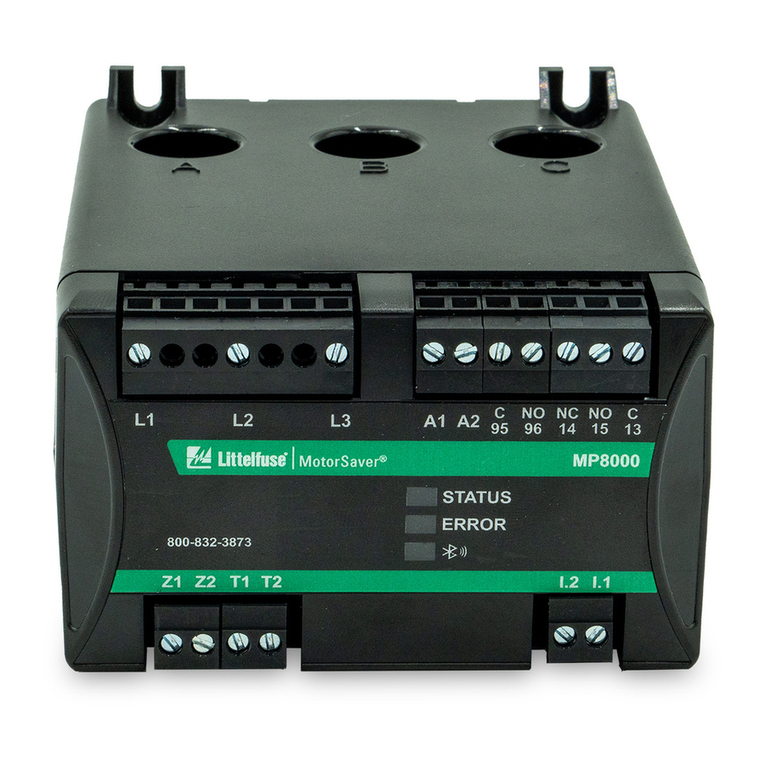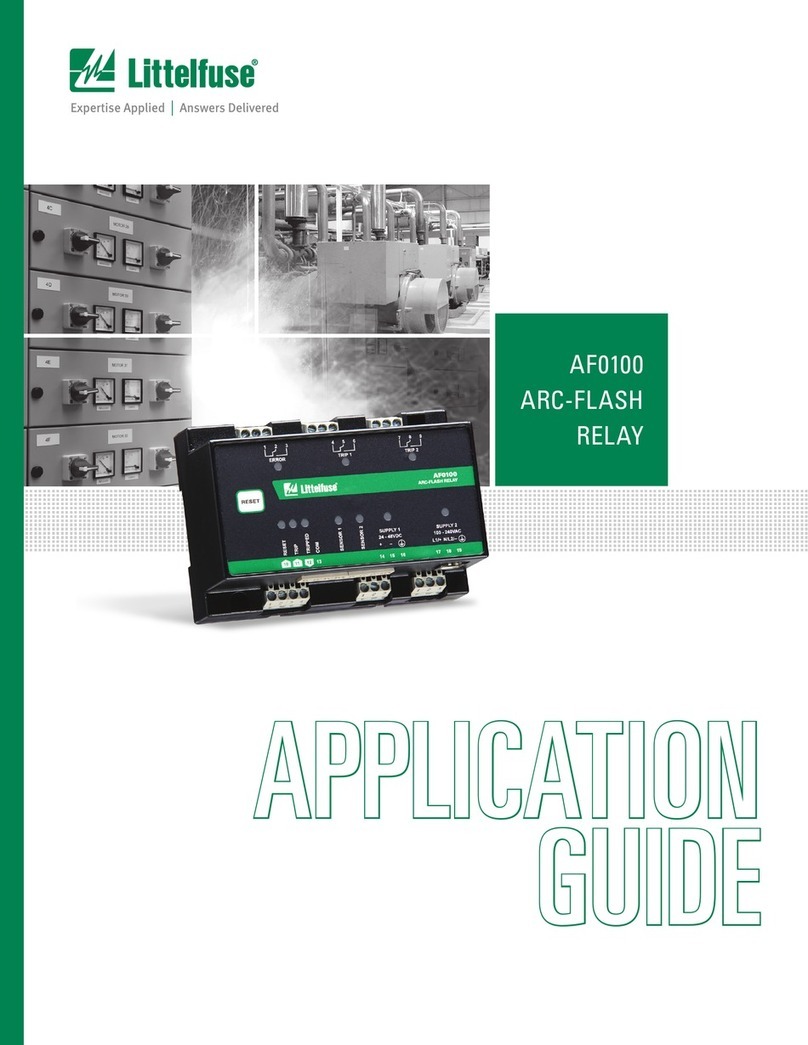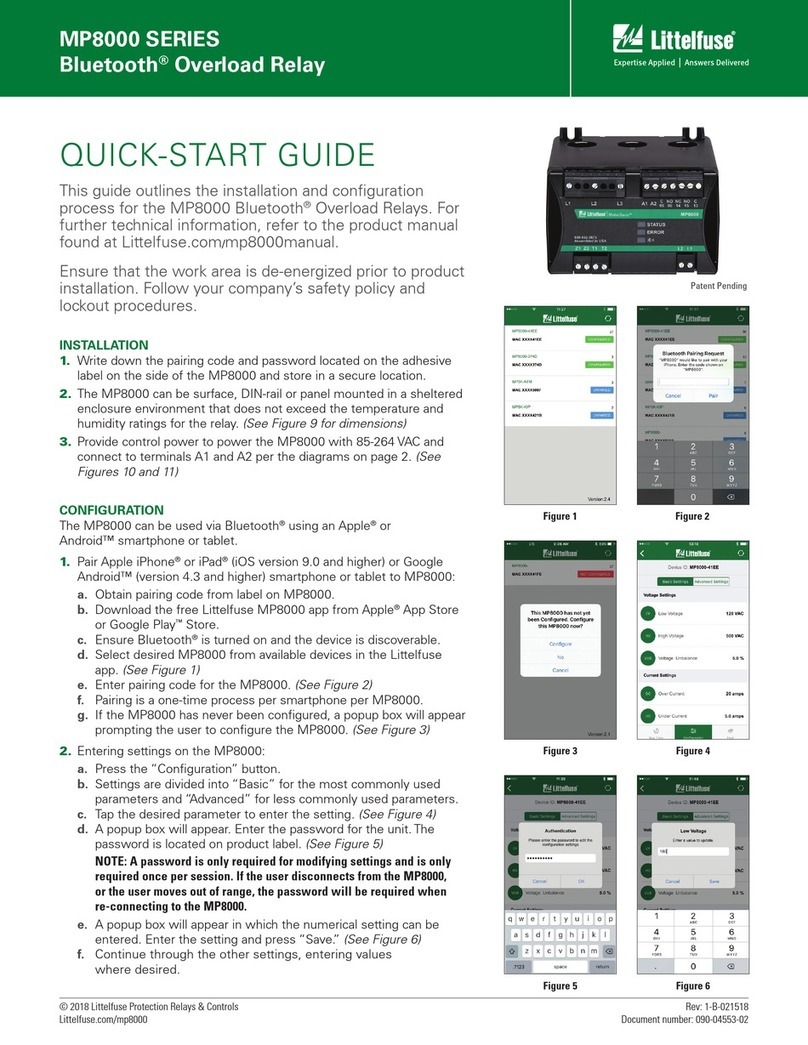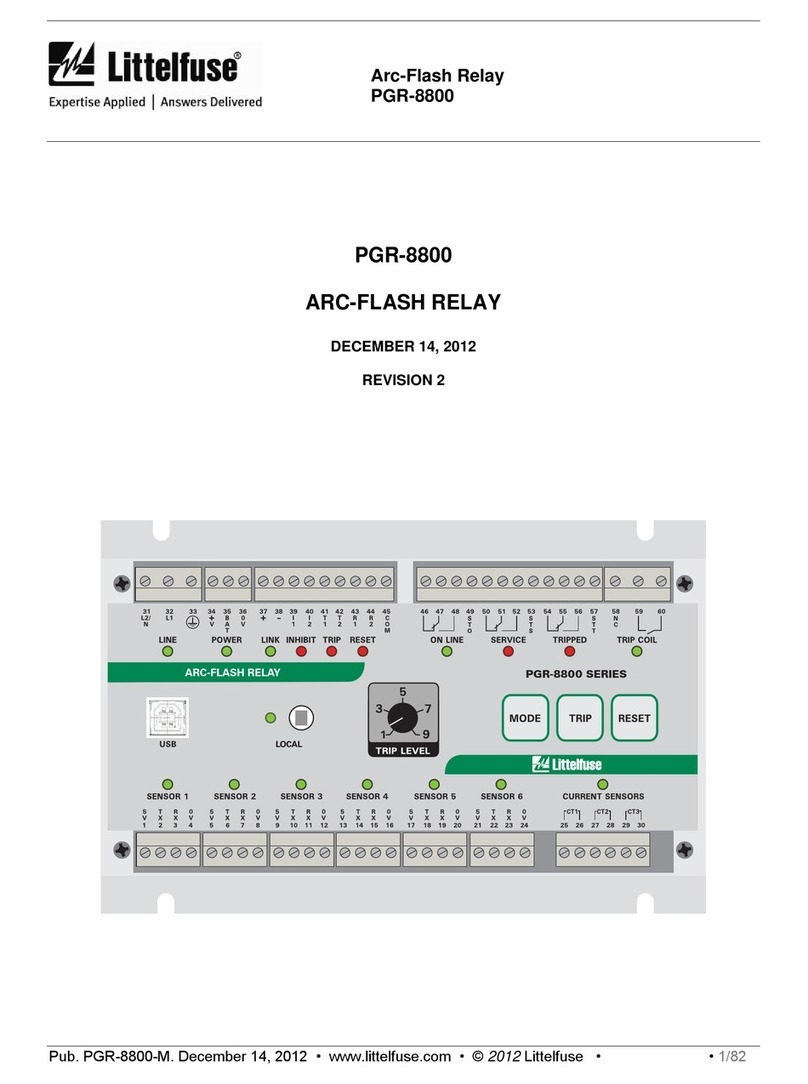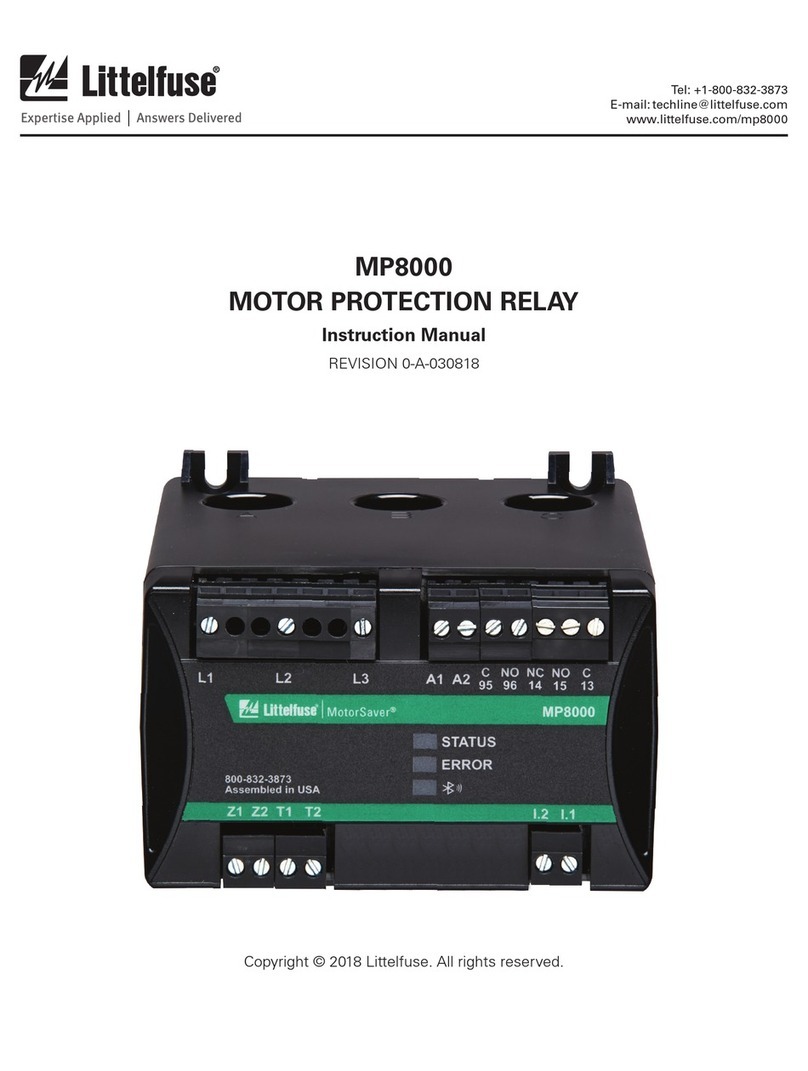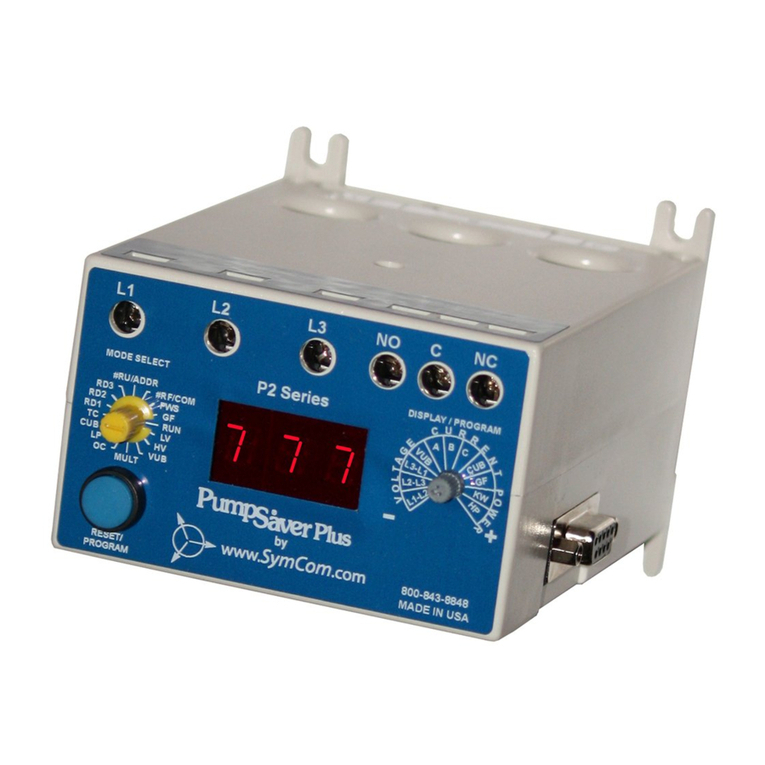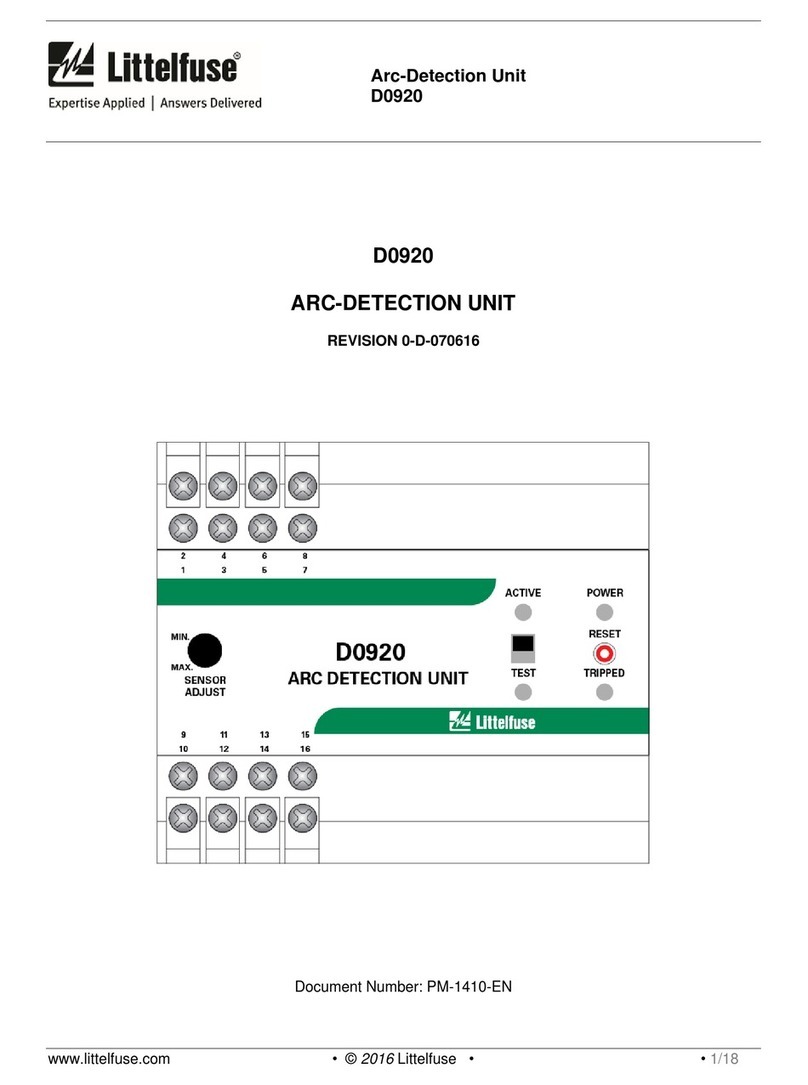
Page 1
REV. 0-B-013118
AF0100 Arc-Flash Relay
1 KEY FEATURES
The AF0100 Arc-Flash Relay is a high-speed, arc-detection
device for electrical power-distribution systems. The AF0100
has two Form-C Trip relays, and has inputs for up to two
optical sensors for optimal arc detection. The inputs support
both point sensors and fiber-optic line sensors, which cover
a larger area.
Using optical sensors rather than relying strictly on current
measurement allows a much faster detection time than
overcurrent relays or a circuit breaker alone can typically
provide, as the light from the arc is unique to arc faults,
whereas current pulses above the nominal level are part of
normal operation for many systems.
On the occurrence of an arc fault, the AF0100 detects the
fault and activates the trip relays, which trips the circuit
breaker(s) supplying the fault. In a typical system, a trip occurs
within 5ms. The total arcing time is effectively reduced to
the mechanical opening time of the circuit breaker, typically
between 30 and 75 milliseconds. This reduces the energy of
the arc fault significantly, increasing worker safety, reducing
fault damage, and improving uptime.
The AF0100 can be used on ac or dc electrical systems and
can be powered from either an ac or dc supply, or both. For
all available ordering options, see section 10.7.
1.1 Easy Installation
The AF0100 includes two sensor inputs, two trip relays,
one error relay, and a digital input and output interface
which makes it possible to connect additional AF0100 or
AF0500 units. See Fig. 1. The complete configuration and
“programming” of the system can be done by simply wiring
the inputs and outputs marked with green arrows – no
external software is needed.
A system with multiple zones and upstream circuit breakers
can be implemented such that in many applications, the
switchboard wiring diagram can completely describe how
the arc-flash system works.
The relay will automatically learn which sensors and
power supplies are connected, and will indicate an alarm
if a previously connected wire breaks or is unplugged. If a
configuration change is needed, the redetection process
can be triggered by pressing the Reset button for 20 s, see
section 7.1.
1.2 Fail-Safe Operation
The AF0100 continuously monitors its internal circuitry as
well as the connected optical sensors. Any system faults,
including a sensor-cable fault, are indicated by an Error relay
and the Error LED on the front panel.
A redundant trip circuit ensures that the AF0100 will trip
the circuit breaker on an arc flash even if a primary trip-
circuit component fails (shunt trip mode only). The design
of the redundant trip circuit also provides a significantly
faster response to an arc on power-up (for example, after
maintenance during a shutdown) than is possible with
microprocessor-only relays, which is an advantage in smaller
self-powered systems.
1.3 Fast Error and Fault Location
The optical sensors used with the AF0100 have built-in LED’s
for indication of health and for easy location of arc faults.
The AF0100 also has one LED per optical sensor on the front
panel to indicate which sensor(s) have caused a trip and for
indicating problems in the installation.
1.4 USB Interface
A USB interface on the lower panel of the AF0100 provides
easy PC access to configuration settings. No PC driver or
software installation is required.


